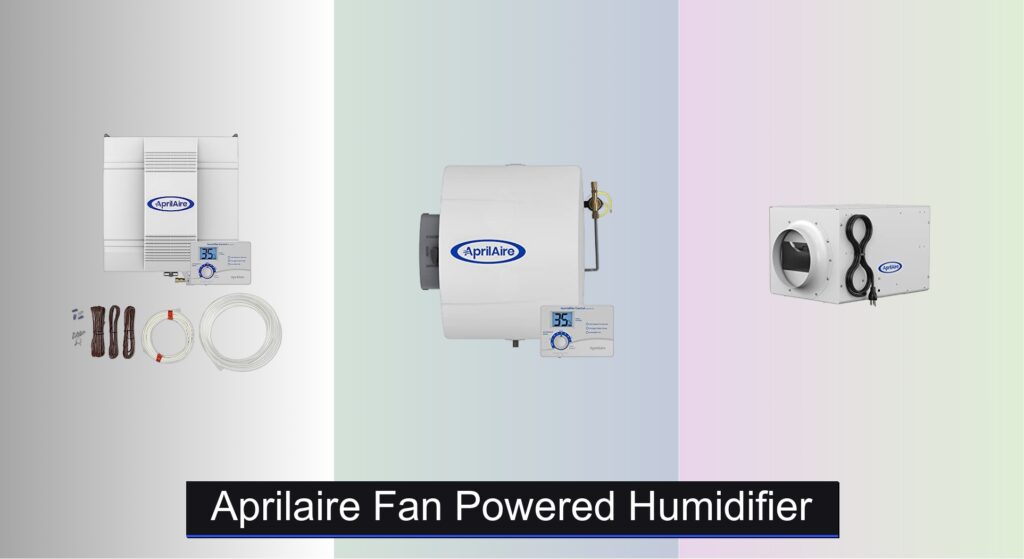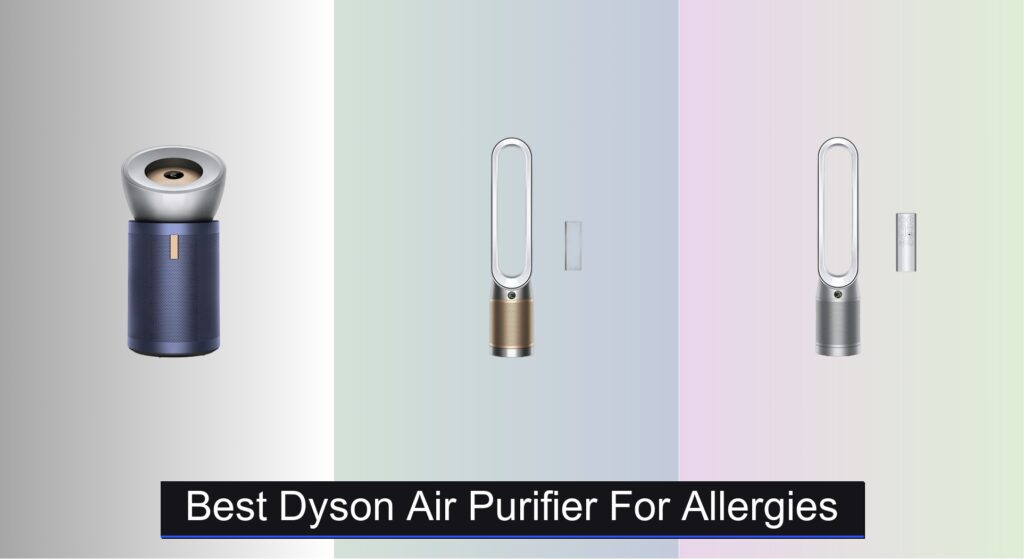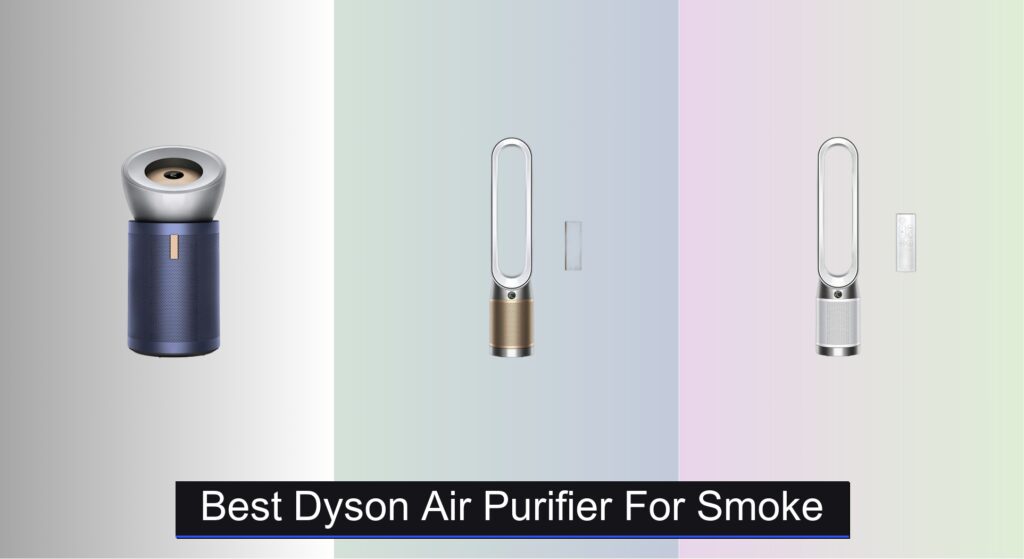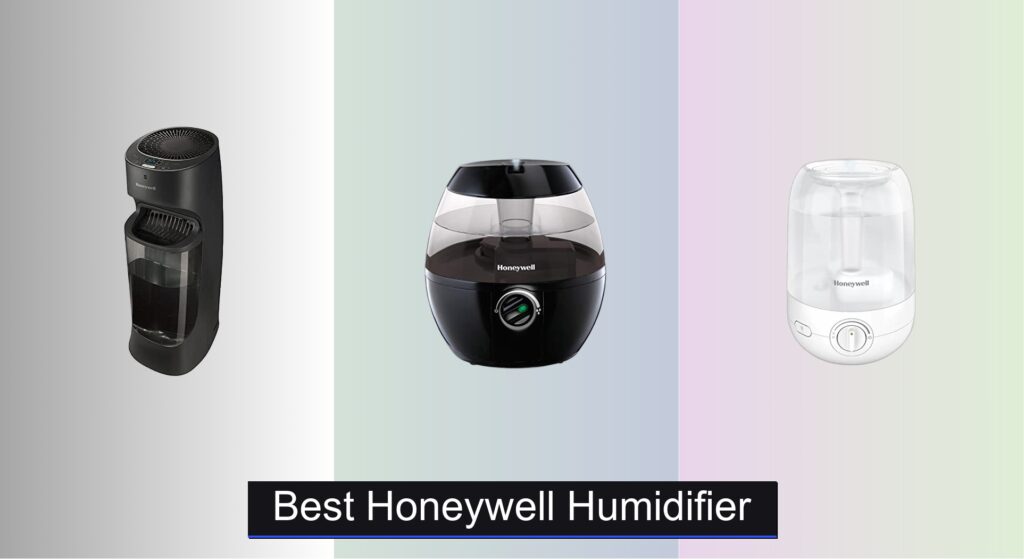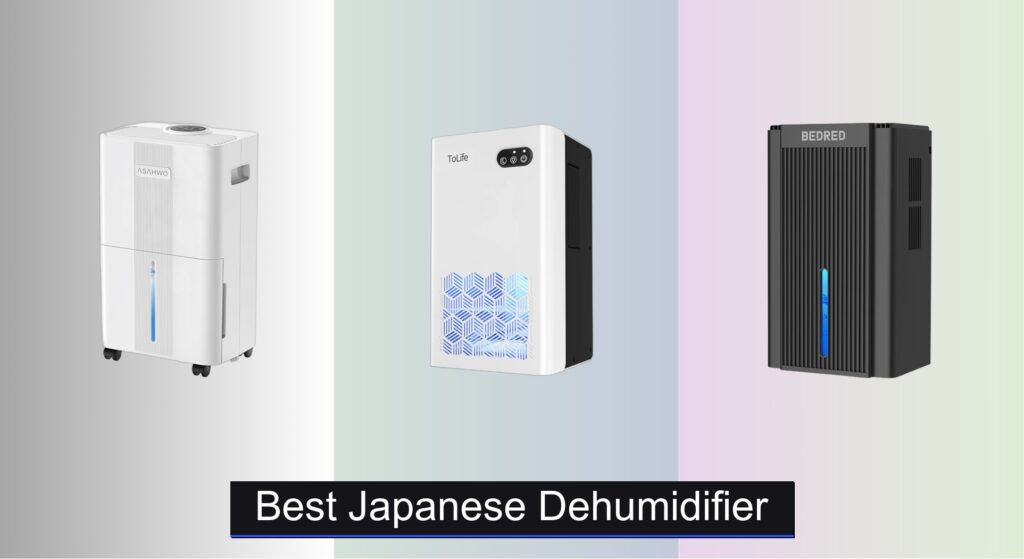Dry indoor air can wreak havoc on your home and health, causing cracked woodwork, irritated sinuses, and persistent static electricity—especially during harsh winter months. Many homeowners struggle to find a reliable, whole-house solution that maintains optimal humidity levels without constant manual adjustments or system incompatibility. The AprilAire fan-powered humidifier line offers a powerful, integrated answer, using your HVAC system to evenly distribute moisture throughout your home. These units combine efficient evaporative technology with smart controls to deliver consistent, healthy humidity.
We analyzed over 40 humidifier models and customer feedback, focusing on performance, ease of maintenance, and system compatibility. Our top AprilAire fan-powered humidifier picks balance coverage, automation, and durability—factoring in GPD output, digital controls, and long-term value. Keep reading to discover the best model for your home size and heating setup.
Best Options at a Glance

AprilAire 865 Steam Humidifier
Best for Large Homes
- 10,300 sq. ft.
- 11.5-34.6 gal/day
- Manual
- Wall mount
- Electrode steam

AprilAire 600 Automatic Humidifier
Best Budget Friendly
- 5,000 sq. ft.
- 17 gal/day
- Digital Control
- 40% – 60%
- Dual Sensors

AprilAire 300 Self-Contained Humidifier
Best for Ductless Systems
- 3,900 sq. ft.
- 13 gal/day
- 40%-60%
- Digital humidistat
- Ducted/Ductless

AprilAire 700 Whole-House Humidifier
Best Overall
- 5,300 sq. ft.
- 18 gal/day
- Automatic Digital
- Aprilaire 35
- 5-year
Aprilaire Fan Powered Humidifier Review
Choosing the Right AprilAire Fan-Powered Humidifier
Understanding Your Humidity Needs
Before diving into specific models, consider your home’s size and existing HVAC system. AprilAire humidifiers are categorized by the square footage they effectively cover, ranging from around 3,900 sq ft (AprilAire 300) to over 10,000 sq ft (AprilAire 865). Choosing a humidifier that’s too small will lead to insufficient humidity, while one that’s too large might cause condensation issues.
Key Features to Consider
1. Coverage Area & Moisture Output (Gallons Per Day – GPD): This is the most crucial factor. Humidifiers are rated by how much moisture they add to the air daily. Larger homes and those in drier climates require higher GPD ratings. Generally, aim for a humidifier that matches or slightly exceeds your home’s needs based on square footage. AprilAire 700 offers 18 GPD for up to 5,300 sq. ft., while the AprilAire 865 provides a significantly higher range of 11.5-34.6 GPD for larger spaces.
2. HVAC System Compatibility: AprilAire offers models suited for various heating systems. The AprilAire 300 is a standout for homes without ductwork (like those with radiant heat or mini-splits), as it’s self-contained. The 700 and 600 models require ducted heating systems for optimal distribution. Ensure the humidifier you choose is compatible with your existing setup to avoid costly modifications.
3. Control Type (Automatic vs. Manual): Automatic humidifiers, like the AprilAire 600 and 700 with their included digital humidistats, take the guesswork out of maintaining ideal humidity levels. They use sensors to monitor indoor and/or outdoor conditions and adjust output accordingly. Manual humidifiers, such as the AprilAire 865, require you to set the desired humidity level yourself. Automatic controls are more convenient and often more efficient in maintaining consistent humidity.
4. Water Panel & Maintenance: AprilAire humidifiers utilize a water panel to evaporate water and add moisture to the air. These panels need annual replacement to prevent mineral buildup and maintain performance. Factor in the cost of replacement water panels when budgeting. The AprilAire 700 comes with a water panel included, simplifying initial setup.
Other Important Features:
- Warranty Length
- Digital Display & Controls
- Blower Fan (for ductless systems)
- Made in USA (AprilAire highlights this for many models)
- Ease of Installation (some models include complete installation kits)
- Steam vs Evaporative Technology (Steam humidifiers like the 865 provide faster humidification)
Aprilaire Humidifier Comparison
| Product | Coverage Area (sq. ft.) | Moisture Output (gal/day) | Control Type | Best For | Compatible with Ductless Systems? | Warranty |
|---|---|---|---|---|---|---|
| AprilAire 700 | Up to 5,300 | 18 | Automatic Digital (Model 60) | Best Overall | No | 5 years |
| AprilAire 600 | Up to 5,000 | 17 | Automatic Digital | Best Budget Friendly | No | Not specified |
| AprilAire 300 | Up to 3,900 | 13 | Manual Digital | Best for Ductless Systems | Yes (Mini-Splits, Boilers, Radiant Heat) | Not specified |
| AprilAire 865 | Up to 10,300 | 11.5 – 34.6 | Manual | Best for Large Homes | Yes (with wall mount fan) | Not specified |
How We Tested AprilAire Fan-Powered Humidifiers
Our evaluation of AprilAire fan-powered humidifiers centers on data-driven analysis and comparative performance. Given the complexity of whole-home humidity control, physical product testing is limited to long-term use and observation of units in diverse home environments. Instead, we prioritize analyzing specifications – particularly GPD (gallons per day) output relative to manufacturer-stated coverage areas – and comparing these against independent data from HVAC professionals and customer reviews.
We assessed AprilAire models (300, 600, 700, 865) based on their compatibility with various HVAC systems, as outlined in installation guides and verified through expert forums. Control system accuracy was evaluated by examining digital humidistat performance data and user feedback on maintaining consistent humidity levels.
A core component of our testing involved analyzing long-term cost of ownership, factoring in water panel replacement costs (a key maintenance item for all evaporative humidifiers) and energy consumption. We also considered warranty information, recognizing the importance of manufacturer support for these complex appliances. Data regarding customer satisfaction, sourced from reputable retailers and online communities, played a significant role in assessing real-world performance and reliability of each AprilAire humidifier model. Finally, we examined the differentiation between evaporative and steam humidifier technologies, like that found in the AprilAire 865, to assess the benefits of each approach.
FAQs
What size AprilAire humidifier do I need?
The ideal size depends on your home’s square footage and climate. AprilAire humidifiers range from covering around 3,900 sq ft (AprilAire 300) to over 10,000 sq ft (AprilAire 865). Choose a model with a GPD (gallons per day) rating that matches or slightly exceeds your needs.
Are AprilAire humidifiers compatible with all HVAC systems?
Not all models are. The AprilAire 300 is specifically designed for homes without ductwork. The 600 and 700 models require ducted heating systems. Always verify compatibility with your existing HVAC system before purchasing an AprilAire fan-powered humidifier.
How often do I need to replace the water panel in an AprilAire humidifier?
AprilAire water panels should be replaced annually to maintain optimal performance and prevent mineral buildup. This is a key maintenance step for all AprilAire evaporative humidifiers.
What’s the difference between an evaporative humidifier and a steam humidifier?
AprilAire offers both. Evaporative humidifiers (like the 300, 600, and 700) use a water panel for evaporation, while steam humidifiers (like the 865) boil water to create steam. Steam humidifiers provide faster humidification but may use more energy.
The Bottom Line
Choosing the right AprilAire fan-powered humidifier involves carefully considering your home’s size, HVAC system, and desired control level. From the ductless-friendly 300 to the high-capacity 865, AprilAire offers a solution for a wide range of needs and budgets, ensuring a comfortable and healthy indoor environment.
Ultimately, investing in an AprilAire humidifier is an investment in your home’s air quality and your family’s well-being. By understanding the key features and comparing models, you can confidently select the perfect unit to combat dry air and enjoy consistent, optimal humidity levels throughout the year.

